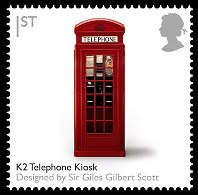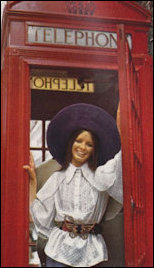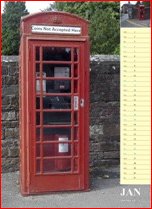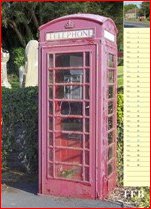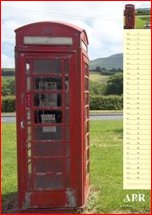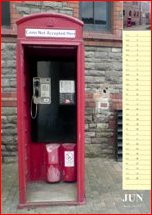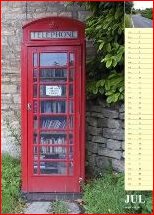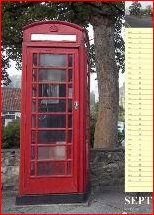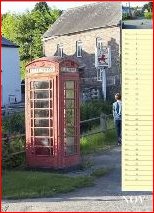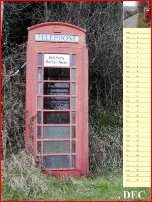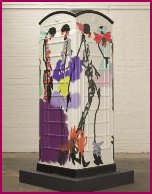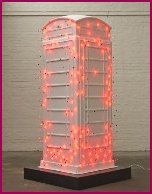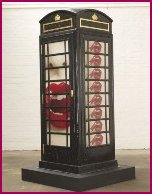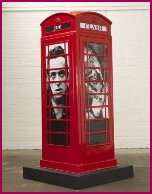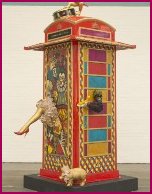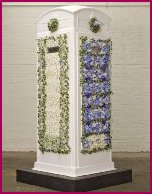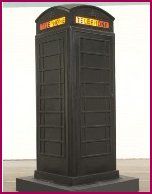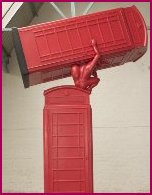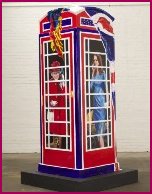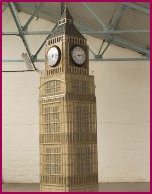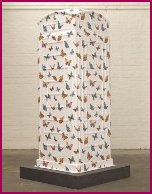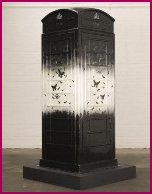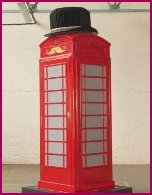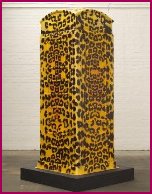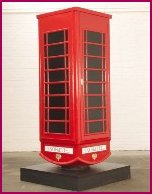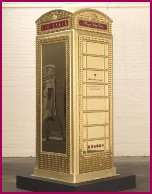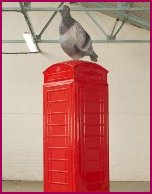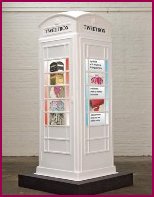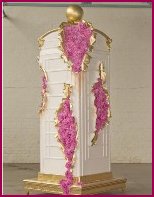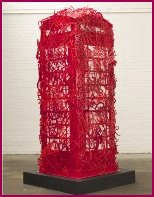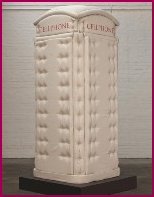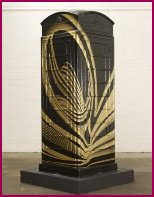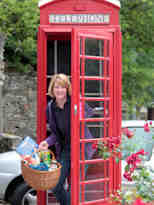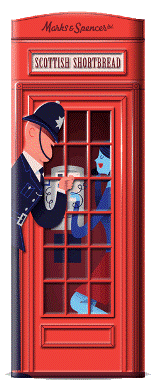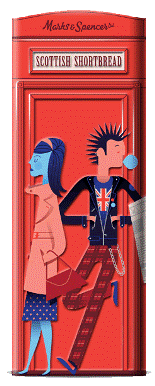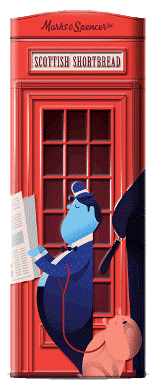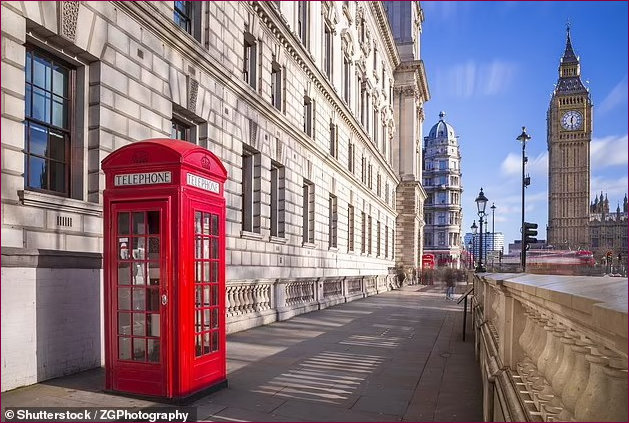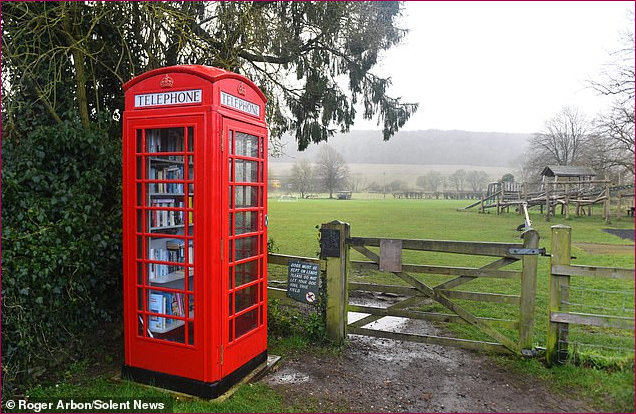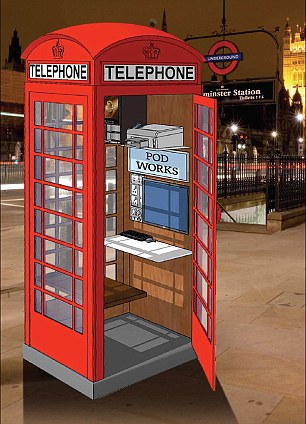Welcome to the home page of the 'iconic' red telephone kiosk which has a special place in our hearts and is quintessentially and unashamedly British.
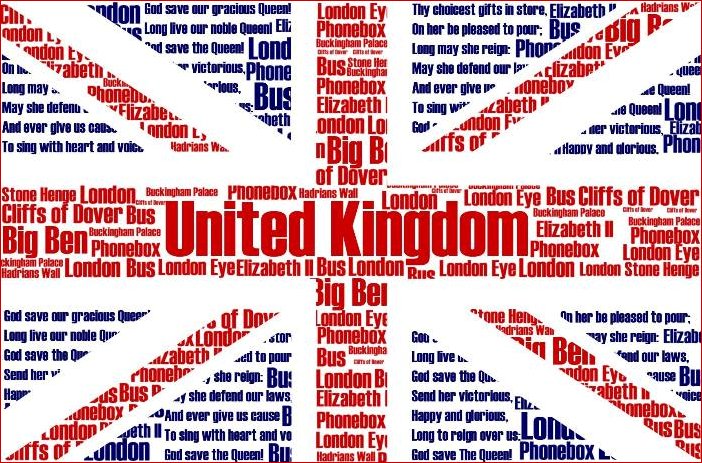
Top 10 Facts
1 - The K6 or “Jubilee Kiosk” commemorates the Silver Jubilee of King George V.
2 - The K6 was designed by Sir Giles Gilbert Scott, who also designed Liverpool’s Anglican Cathedral, Battersea Power Station and Bankside Power Station now Tate Modern.
3 - Sir Giles also designed the K2 and K3. The K4 kiosk was developed by the Post Office Engineering Department based on the K2 design.
4 - The K6 was the first kiosk installed nationwide and the standard kiosk until the introduction of the K8 in 1968.
5 - The K6 kiosk is made from cast iron with a teak door. It is 8’3” tall (2.4 metres) and weighs three quarters of a ton (762 kilograms).
6 - The K6 design was approved by the Post Office and the Royal Fine Arts Commission, which endorsed “Post Office red” as the standard colour. Sir Giles agreed to the use of “Post Office red ”, but initially suggested the outside be painted silver and the inside greenish-blue. He strongly urged rural kiosks be painted dove-grey.
7 - Two K6 kiosks were installed in France during 1995, for the 50th anniversary of the D-Day landings.
8 - 60 red K6’s have been transformed into combined payphones and cash machines.
9 - There are 8,000 working traditional red phone boxes in the UK, the majority are K6s.
10 - The K6 was voted nation's favourite top British design in 2015 and is regularly listed in lists of top British icons.
Source : MyNewsDesk
History
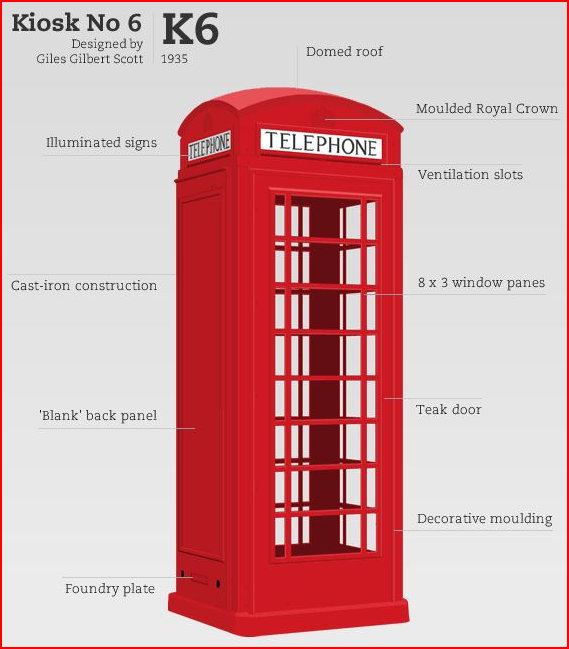
The Story of Kiosk No 6
Summary
The K6 kiosk is identified as Britain's red Telephone Box; in fact eight kiosk types were introduced by the General Post Office between 1926 and 1983. The K6 was designed by Sir Giles Gilbert Scott to commemorate the Silver Jubilee of the coronation of King George V in 1935. Some 60,000 examples were installed across Britain, which is why the K6 has come to represent the red Telephone Box. Over 11,000 K6s remain and they are the most visible examples of the eight kiosk types.
Design
The K6 kiosk is constructed of cast-iron sections, bolted together, standing on a concrete base. Its general form is a four-sided rectangular box with a domed roof. Three sides of the kiosk are glazed, with eight rows of three panes of glass; a wide central pane of glass and two outer, narrow panes. There is reeded moulding around the window panel corresponding to the dimensions of the door opening, disguising that there is an opening on one side only. The door is of teak, with a metal "cup" handle. For weatherproofing there is a drip cap above the door. The back panel has a blank, moulted panel conforming to the dimensions of the windows, and cable holes either side of the foundry plate at the foot of the kiosk. Above the main body of the kiosk is a plain entablature, set back from the face of the kiosk. The entablature carries a rectangular slot for signage, with trim moulding Set into the slot is an illuminated telephone sign, with serif capital lettering on opaque glass. Ventilation slots are inserted below the signage slot. The roof of the kiosk is domed, formed by segmental pediments, with a convex-moulded edge. The pediments carry a moulted Royal crown.
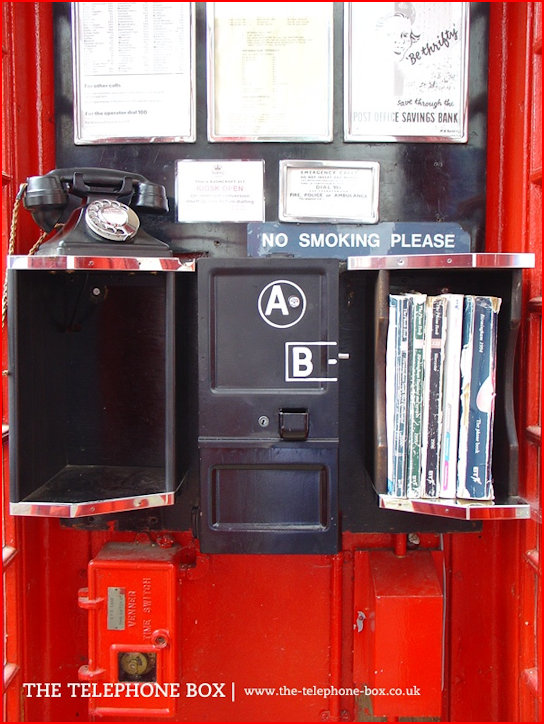
History
The K6 kiosk was commissioned by the General Post Office in 1935 to commemorate the Silver Jubilee of King George V. The design needed to be suitable for universal use, not repeating the mistakes of earlier kiosks. The K2 and K3 were attractive designs but had proved problematic. The K2 was too large and too expensive; the K3 too brittle. The General Post Office turned again to Sir Giles Gilbert Scott, with his triumphant new kiosk appearing in 1936. Some 8,000 kiosks were installed as part of the 'Jubilee Concession', allowing towns and villages with a Post Office to apply for a kiosk. A year later under the 'Tercentenary Concession' celebrating the Post Office's 300th anniversary, a further 1,000 kiosks were installed over 12 years for local authorities paying a five year subscription of £4. In 1939 a more vandal-proof Mk II version was introduced. In 1949 the Royal Fine Arts Commission intervened again, and bowing to pressure allowed rural examples to be painted in different colours. Subsequently kiosks have emerged painted in colours such as green and battleship grey. By 1960 some 60,000 examples existed, but the design was beginning to look old-fashioned. The General Post Office was looking at a modern replacement: the K7.
Heritage legacy
Between 1936 and 1968 60,000 examples of the K6 were installed. There are around 2,500 listings for the K6 kiosk in Great Britain and Northern Ireland. There are approximately 8,400 non-listed K6 kiosks, giving a total number of surviving K6 kiosks of approximately 11,700 (about 20% of all K6 kiosks). Of the eight kiosk types introduced by the General Post Office, the K6 was the most populous type introduced, and the most populous type in terms of surviving kiosks. The majority of listed kiosks, more than 90%, are K6 variants.
Source : Telephone Box.co.uk
Top 25 Greatest British Designs
Top 25 Greatest British Designs - Source The Independent
In 1924, Sir Giles Robert Scott designed a functional red phone box. Little did he know that almost a century later, it would be voted the greatest British design of all time.
Almost 40 per cent of British adults who took part in a poll agreed that the phone box, with its eye-catching colour and nearly sloped roof, is the best design to come out of the country. Sharing a similarly distinctive colour, the Routemaster Double Decker Bus came in second with 28 per cent of the vote, which was followed by the Union Flag, with just under a quarter.
1 - Red Phone Box (K Series) – 39%
2 - Routemaster Double Decker Bus – 28%
3 - Union Jack – 24%
4 - Spitfire – 23%
5 - Rolls Royce – 22%
6 - London Taxi – 21%
7 - Tube Map – 21%
8 - Mini Cooper – 20%
9 - Concorde – 20%
10 - Red Pillar Box – 17%
11 - Jaguar E-Type – 16%
12 - Aston Martin DB5 – 12%
13 - Miniskirt – 11%
14 - London Eye – 11%
15 - Double Helix DNA structure – 10%
16 - Wembley Stadium – 9%
17 - First Class Postage Stamp – 8%
18 - Dr Martens – 6%
19 - Angel of the North – 5%
20 - Wellington Boots – 5%
21 - London 2012 Olympic Torch – 5%
22 - Tartan Print - 5%
23 - Burberry Trench Coat – 4%
24 - Saville Row Suit – 4%
25 - Fred Perry Polo Shirt – 3%
2021- An affectionate 'Ode'
TOM UTLEY: From playing the sax to losing your virginity, phone boxes call us all back to our youth
By Tom Utley for the Daily Mail |Published: 11th November 2021 | Updated: 12th November 2021
Younger readers, brought up in the age of the mobile phone, may perhaps be baffled by this week's extraordinary outpourings of affection for that increasingly unnecessary item of street furniture — the public telephone box.
'All week, since the decision by the communications watchdog to protect some 5,000 of BT's public phone boxes from closure, radio stations have been deluged with calls from listeners, recounting fond memories of the part these boxes have played in their lives' - image and strapline as used in the Daily Mail article with thanks - image © Shutterstock/ZGPhotography
Why, they may wonder, are campaigners up and down the country battling so fiercely to save these relics of a past age from the scrapheap? And why do so many of my generation (I'll be 68 later this month) hold such a special place for them in our hearts? Read the full article here
2021 - Flower Flashes by 'Banksy' UK/USA

'Spilling from red phone boxes, the displays are a brainchild of Lewis Miller, a 47-year-old florist dubbed ‘Botanical Banksy’ in his native New York' - image sourced from and © of PA as shown in the Daily Mail
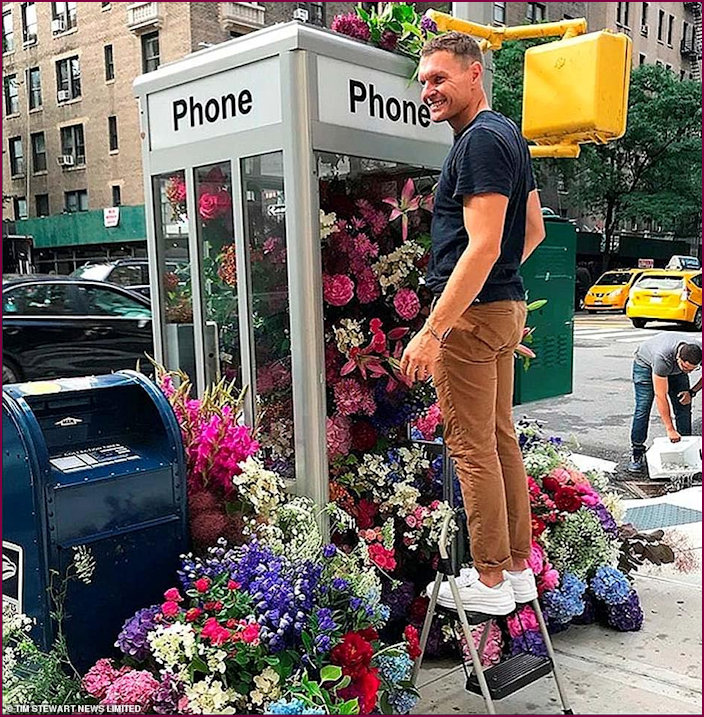
'Miller’s ‘flower flashes’ comprise a minimum of 1,500 flowers — and sometimes as many as 6,000 — and use leftover flowers that would otherwise be mulched' - image sourced from and © of Tim Stewart News Ltd as shown in the Daily Mail
2021 - £45K Kiosk 'Office Space' w/LX
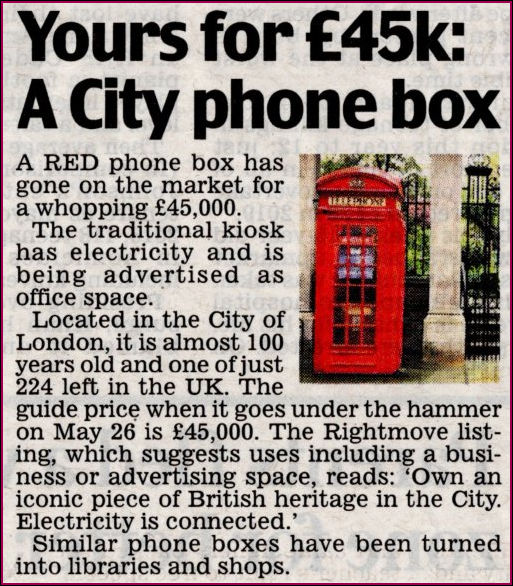
Image and story as it appeared in the Daily Mail on Friday, 7th May 2021
2021 - Young Dancer Statue

London, England - 15th February 2021 : A general view of a bronze statue called Young Dancer by Enzo Plazzotta (1921 - 1981), erected by Westminster City Council in association with the Plazzotta estate in May 1988 opposite the Royal Opera House on February 15, 2021 in London, England. (Photo by John Keeble/Getty Images) - image source and strapline courtesy & © of Getty images with thanks
2021 - 'Green-fingered' Catherine
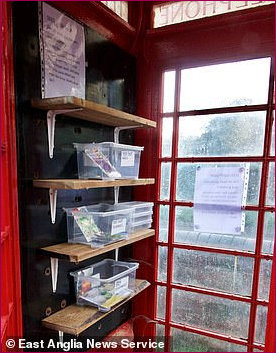
'The Duchess of Cambridge could take advantage of a seed-swapping scheme based in a disused red telephone box on her own doorstep' - image and strapline sourced from the Daily Mail - image © East Anglia News Service

As a royal who's truly engaged with gardening, the Duchess of Cambridge could take advantage of a seed-swapping scheme based in a disused red telephone box on her own doorstep. It is just 200 yards from Kate's home at Anmer Hall on the Queen's 20,000-acre Sandringham estate in Norfolk. The estate, which owns most of Anmer's houses, bought it for £1 under a BT scheme that lets residents choose a new community use for the boxes. It is understood the Duchess has yet to use the kiosk, but she revealed last June that her children loved growing plants from seeds. Source : Daily Mail
2021 - 'Adopt-A-Kiosk' Scheme

BT Logo for the new initiative as seen in the BT promotional Kiosk Brochure .pdf
The Adopt a Kiosk scheme has been successful in transforming unused payphone kiosks and preserves the heritage of the red kiosk, particularly in rural locations. We allow red kiosks to be adopted, subject to certain criteria such as low use and those not required for our own future plans. Read more here
2021 - Now that's a saucy tale!
- Mystery visitor is leaving 'pornographic material' in village phone booth library
- Council fears village will become laughing stock over 'salacious adult literature'
- The hunt is on to find out if the culprit is one of the 851 inhabitants of the village
The phone box was purchased by the council in 2019 after the mobile library service fell victim to spending cuts in the county. Residents are able to borrow the books – which include such bestsellers as Carol by Patricia Highsmith and Bridget Jones: The Edge of Reason – and add a short review when they return them. - image and strapline as seen on the Daily Mail website - image courtesy & © of Roger Arbon/Solent News & Photo Agency
2019 - Huawei - Monumental Cheek or inspired advertising? - You decide!

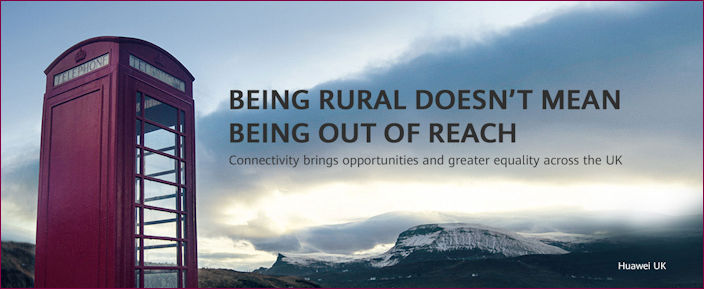
Images sourced from Huawei 'facts'
"Being Rural doesn't mean being out of reach" - From the Shetland Islands to Cornwall, digital connectivity will bring every corner of the UK together. Mobile networks cover 90% of the country, and rural areas need not be left behind. Connectivity improves lives through better education, healthcare and public services. Since 2001, Huawei UK has been helping digitally transform the UK. We believe every corner of the country should have equal digital access - no matter how remote. Digital Connectivity can bring the UK together" - 17th June 2019
2019 - The V&A hosts Mary Quant Fashions & Models in spectacular 50th Anniversary Exhibition
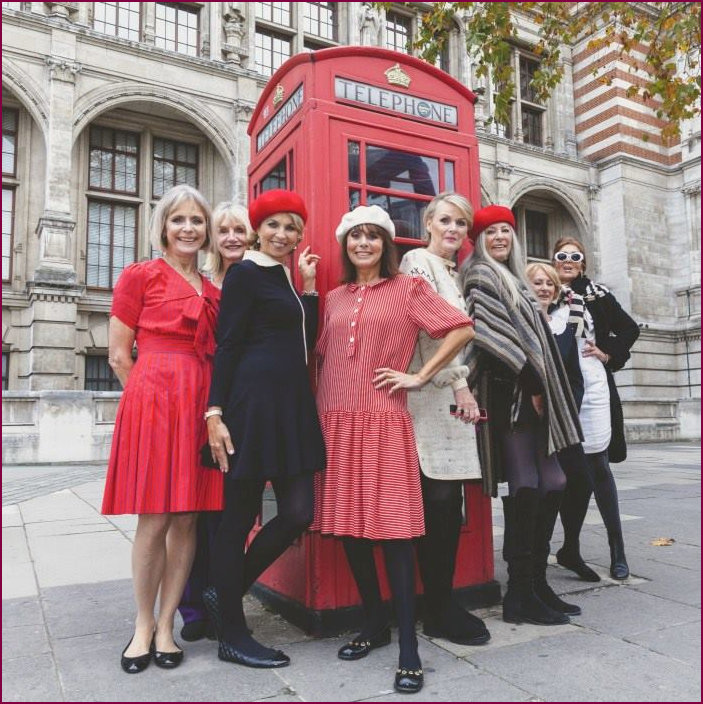
Original Mary Quant models pose outside the V&A - image courtesy & © of The Glass Magazine
2019 - Belated 70th Birthday Present for the Duke of Rothesay (aka P of W)

Image sourced from the article as it appeared in pressandjournal
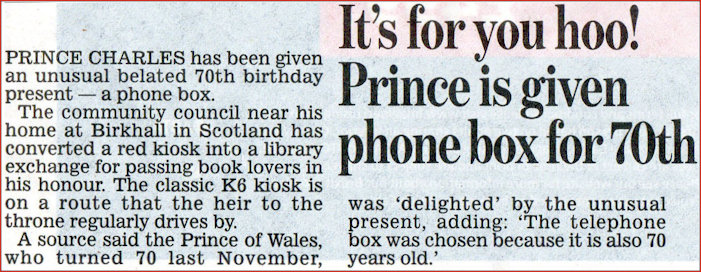
2018 - The Jonathan 'Woss' Show
Image screendumps sourced from ITV hub
As a general rule I would not advocate anything featuring Jonathan 'Woss' on my website and would in no way promote anyone who acted as shamelessly as he did (see Sachsgate) towards our national treasure (one of which 'Wossy' will never become) Andrew Sachs. However he was not the only culpable brat, the others' name will never appear on any of my pages. For some reason Jonathan Ross seems to have redeemed himself and returned as a chat show host. I do not consider him redeemed and never will, but he did allow Sir Cliff Richard (my first childhood crush) to finally let us into the nightmare world created for him by the BBC. For that, and that I saw the show, I am grateful. Of course Jonathan Ross attempted to make the whole episode about himself and tried to 'sex everything up' but another good thing that came out of it all was that in the 'sexing up' inset he brought out this really cool calendar of Sir Cliff (an annual event) and 'January' featured him in a telephone kiosk. Unfortunately, as Ross suffers from a speech impediment, his gratuitous leaping about trying to make a point, made his speech less clear than normal so the important bit 'this is a calendar from ******* I believe' did not manifest itself other than as blurred diction. So, regrettably I still don't have a provenance for this image to get a better one and take all reference to Jonathan Ross out of my website. I did write to the ITV 'contact us/feedback' link for the show but needless to say they have not bothered responding - very unprofessional, but then, why should I be surprised? After this I had a brainwave and have just this minute send an e-mail to the official fan club ...... I wait with bated breath!
2018 - Dancing on Ice
Screenshot from ITV's Dancing on Ice episode 5 transmitted on 4th February 2018 - here's hoping nobody accuses the show of 'jingoism'!
2017 - 'The Bird Feeder' for Christmas
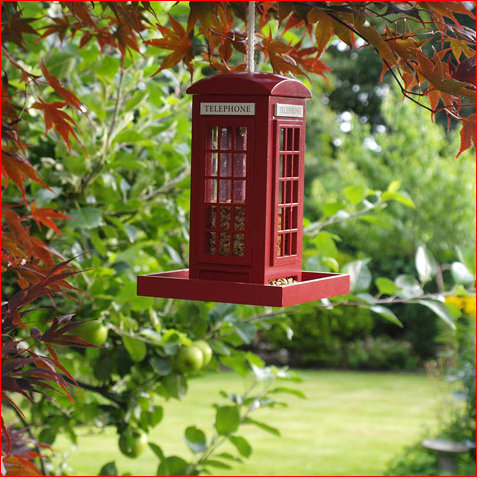
Surely the most fabulous Christmas present of all - image courtesy and © of Sutton Seeds
2017 - 'Neighbours' comes to London
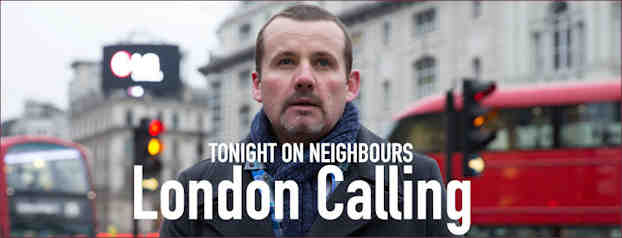
2017 - An eccentricity too far?
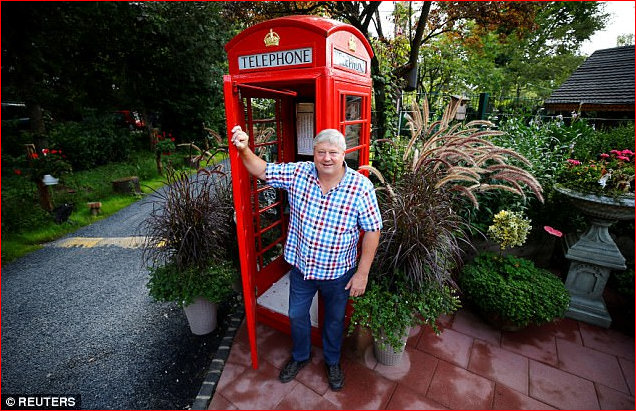
Ex-Pat Gary Blackburn has also installed a red telephone box and post box in his garden to the bemusement of many of his neighbours - read the full story here or online - image courtesy & © of Reuters
2017 - Is this the end of the Kiosk?
Speculation grows as news comes in that BT are to scrap 20,000 Kiosks by 2022
Convenience of public phone boxes near end of line
From the FT - About 20,000 little-used booths to be axed as mobiles reduce their relevance
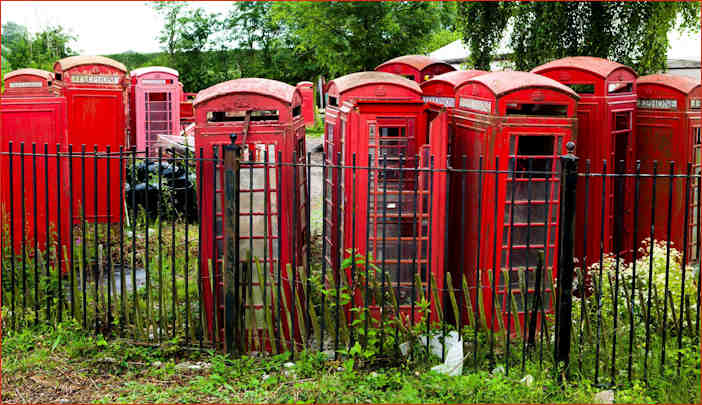
The annual cost of repairing phone boxes exceeds £7m - © Craig Prentis/Alamy
About half of Britain’s 40,000 public telephone boxes are set to disappear from the streets as BT scraps kiosks that attract more visitors wanting to “spend a penny” than make a 60p phone call. The telecoms company’s phone booths, including 7,000 traditional red phone boxes, still handle about 33,000 calls a day, despite universal mobile phone ownership. Yet more than half the boxes lose money and about a third do not handle a single phone call in any given month. Gerry McQuade, head of BT’s wholesale unit which runs the pay phones business, said he has speeded up plans to cull 20,000 phone boxes and focus on profitable locations. “Very few of them make any money as it stands. In aggregate, it costs us more to collect the money than the phone boxes generate,” he said. Read the full article here
2016 - Kiosk becomes a Mini Work-Station
2015 - Kiosk features (heavily) in 'The Game'

Great piece of artwork setting the scene for setting 'The Game' in the Cold War period in the 1970s
2014 - Dr Who
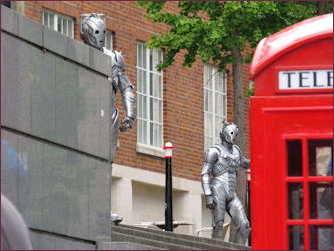
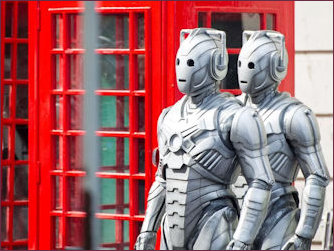
Kiosks and Cybermen - images courtesy and © of the BBC, Wales on Line and tv.uk.msn.com
2014 - Calendar Flop!
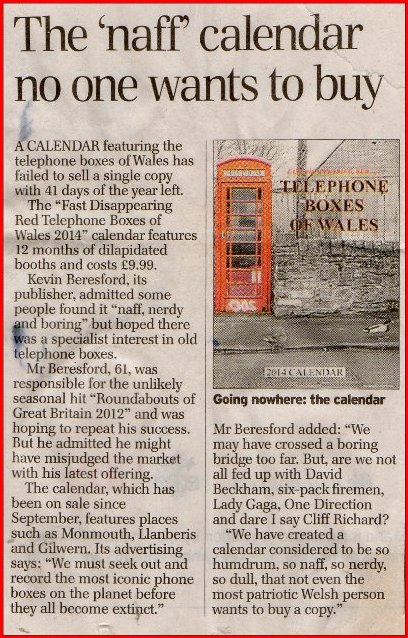
This is how I saw the original article - in the Daily Telegraph (read more)
2014 - ITVs thriller series 'Prey'
John Simm with the prop of all props (used as the promo image) in the new ITV Thriller 'Prey'
2014 - How the Traditional Red Telephone Box became 'Out of Touch'
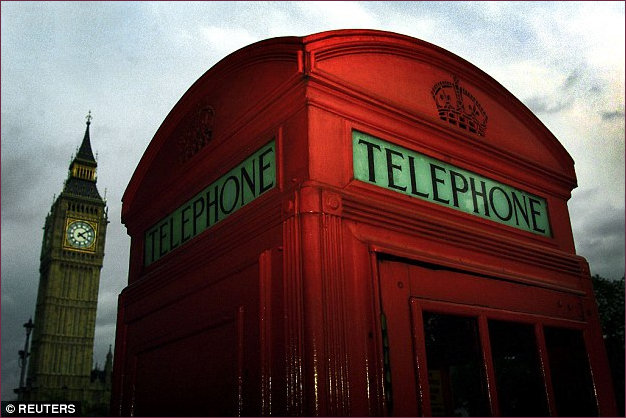
Image © Reuters - Source Daily Mail
In 1868, the Telegraph Act granted the Postmaster General (the office of the General Post Office) the right to acquire privately-owned telegraph companies. Sixteen years later, the first public boxes appeared on British streets, with the first police box appearing in Glasgow in 1891.
In 1923, a national competition was held to source a new design for the kiosks across London. It was held by the Metropolitan Boroughs Joint Standing Committee. After several different styles of kiosk, 8,000 of the K6 were distributed across the UK in 1936.
But in 1969, the Metropolitan Police began decommissioning its network of police boxes. A decade later, the Post Office - which had acquired the boxes - is split into two companies, and they become the responsibility of BT.
With the introduction of mobile phones, the use of public phone boxes deteriorated rapidly over the following decades. In 2008, British Telecommunications launched the Adopt a Kiosk scheme to revive the disused boxes.
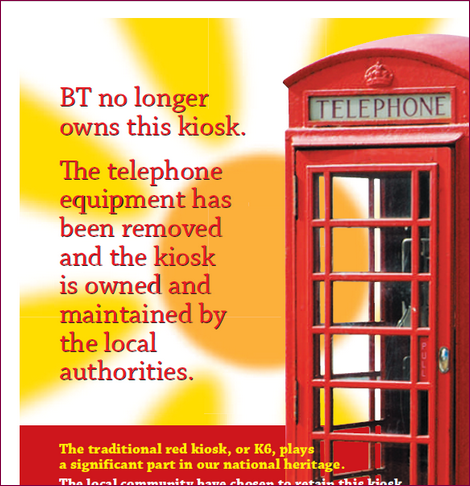
Image courtesy and © of BT
By 2011, 1500 kiosks had been adopted under the scheme. The following year it was revealed that of the 50,000-odd public phones in the UK, only around 11,000 were red boxes.
2012 - 'Shadow Dancer' backdrop
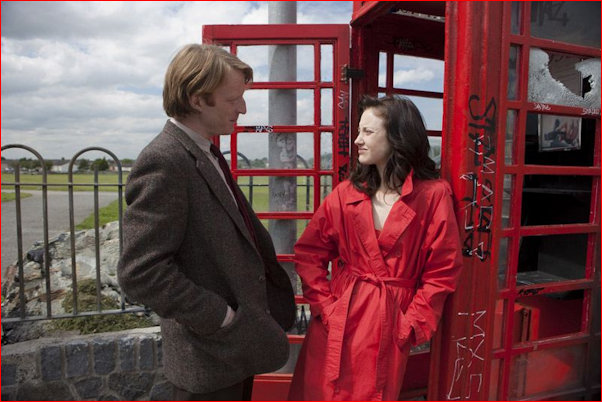
Set in 1990s Belfast, Shadow Dancer is a heart-wrenching thriller about a woman forced to betray all she believes in for the sake of her son. - Source : BBC Films
2012 - Perennial favourite comes second in top 10 British favourites
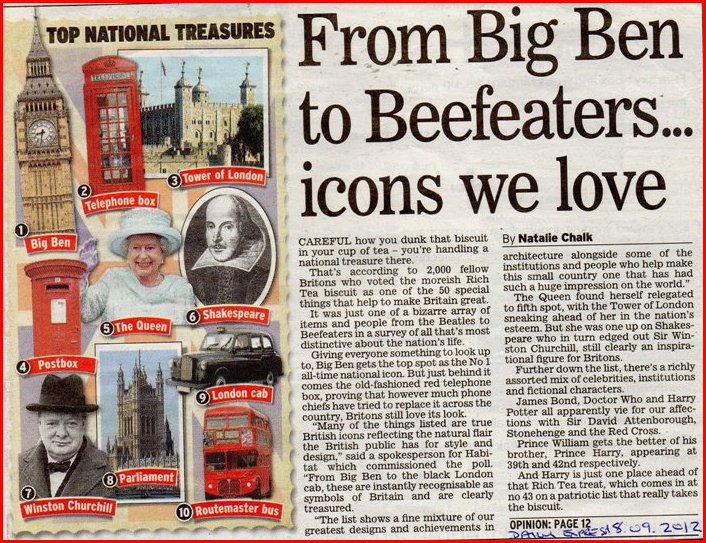
There is still a link (see below) to this article which first appeared in the Daily Express on 18th September 2012!
The last word in luxury?
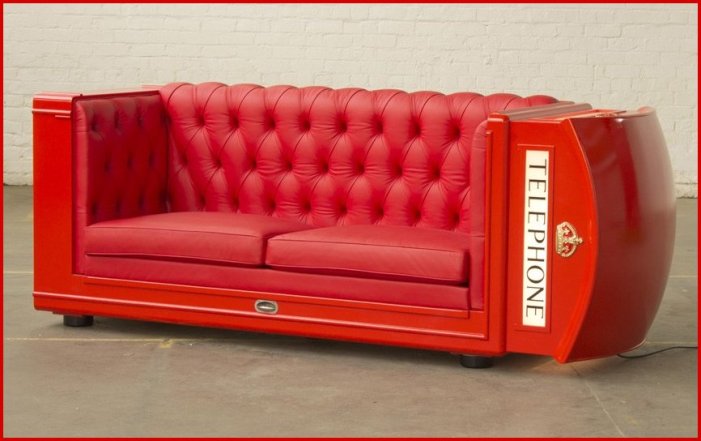
Benjamin Shine, 'Box Lounger' A leather bound and studded sofa. Find it and take a breather, pay homage to great British styling. Picture: Steven Dray / BT Artbox
Artists and designers including Sir Peter Blake, Zaha Hadid and Giles Deacon have re-designed the iconic red telephone box as part of BT Artbox, a new exhibition celebrating the 25th anniversary of charity ChildLine. The Boxes will be exhibited in separate locations across London from today. BTArtbox runs from 18 June until 16 July.
2014 - Imagery
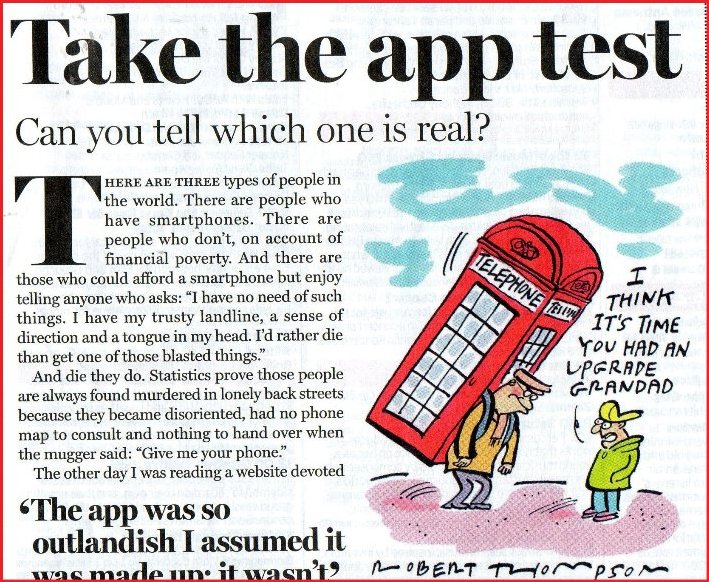
Always topical - cartoon copyright Robert Thompson
2012 - The Original Red Box Gets Revamped in London
The late British architect Sir Giles Gilbert Scott will be remembered for leaving two indelible marks on London: his epic, 38-acre, super-coveted Battersea Power Plant (now in the hands of Malaysian property developers), and the decidedly smaller, but instantly more recognizable, red telephone booth.
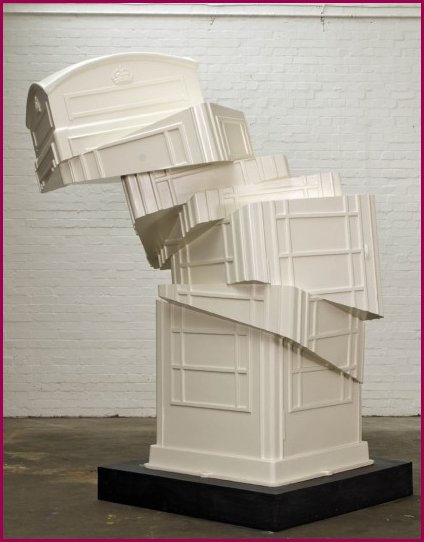
Gerry Judah’s precariously stacked “Slip”
2012 Olympic Kiosk
And representing London - a pin design incorporating the quintessentially British Telephone Kiosk.
Marmite becomes Ma'amite to celebrate the Queen's 2012 Jubilee
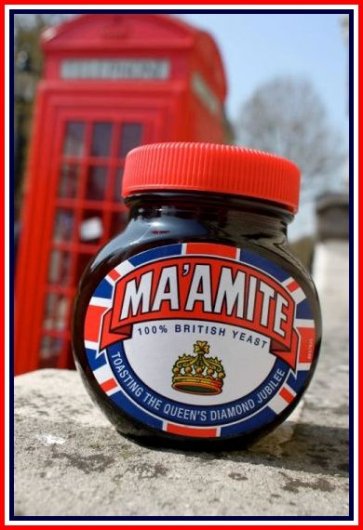
The imaginative team from Marmite have come up with some excellent iconography which can be see here but I think the use of the telephone kiosk also deserves pride of place on this page.
2012 - Kiosk 'grows' a livery
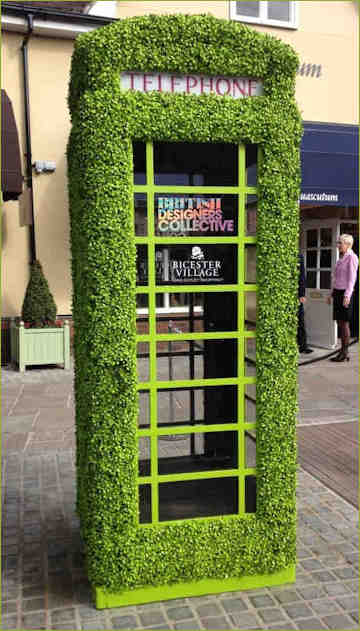
Covered in Buxus to create a stunning 'living' kiosk for and by the British Designers Collective
15th/16th October 1987 - The Storm!
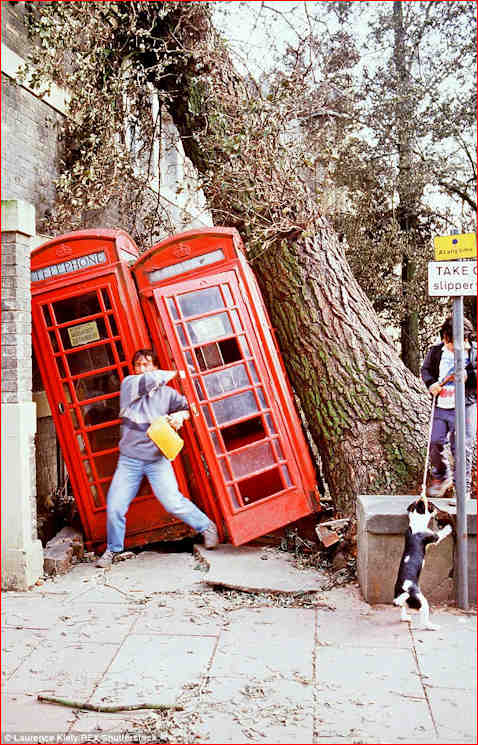
Phone boxes trapped under a tree in Brighton - image © Laurence Kiely/REX/Shutterstock sourced from the Daily Mail - Read more
1936-8 - Kiosk goes Public!

A 1936 advert for the K6 Kiosk
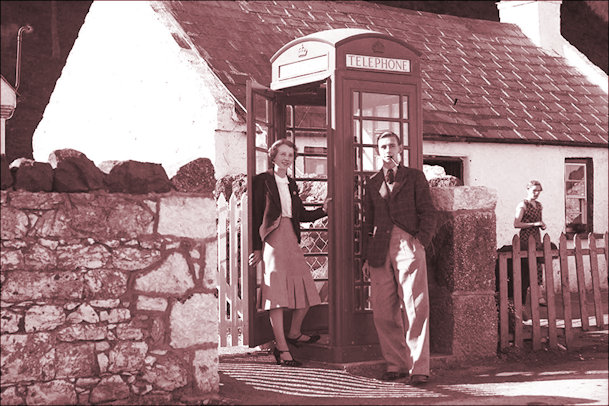
K6 telephone kiosk, Garron Point, Northern Ireland 1938 - image courtesy and © of BT
Celebrities love Telephone Kiosks
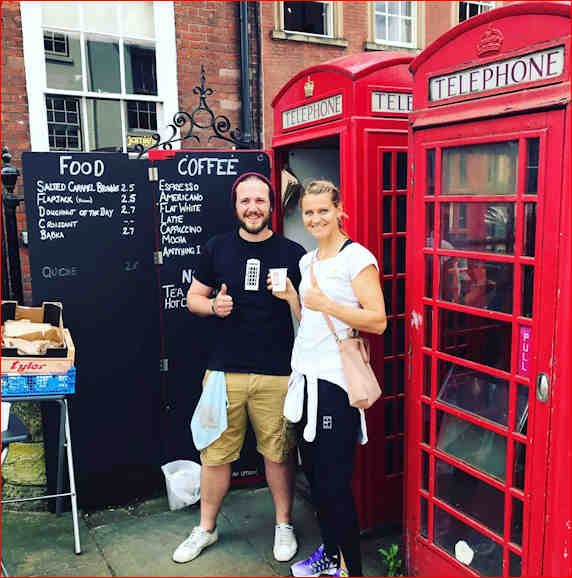
Czech Republic Tennis Player Lucy Safarova in Nottingham for the 2017 Open finds a kiosk converted to a 'great barista'
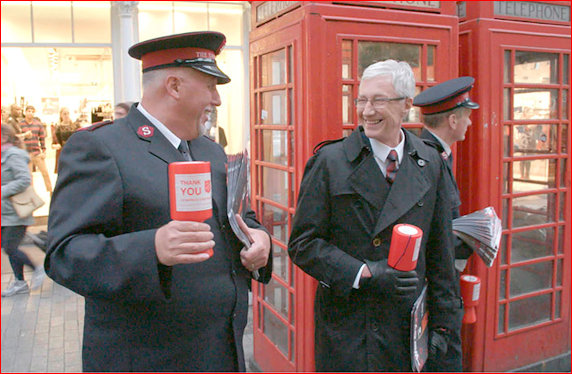
It was one of presenter Paul O’ Grady’s darkest times – losing much-loved friends to AIDs in the Eighties. But through the heartbreak he never forgot the kindness shown by one dedicated band of carers – The Salvation Army. Here he is pictured collecting donations with an excellent view of two kiosks as the backdrop.
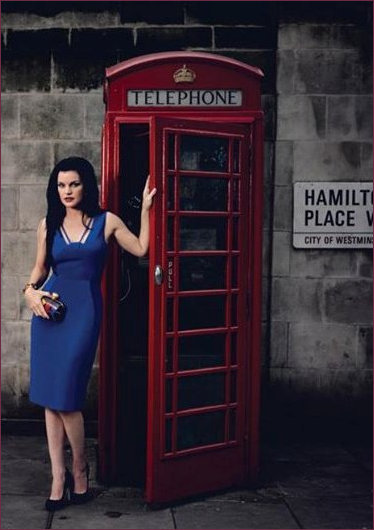

Pauley Perrette of Abby Sciuto and NCIS fame trying to out-vamp a red telephone kiosk - with thanks to the CBS Watch Magazine for this interesting study / Anne Hathaway in British-themed shoot for Harper's Bazaar US - August 2011
Media News
Following on from our own modest success in the Hucknall and Bulwell Dispatch on Friday, 22nd July 2011 - the Daily Telegraph featured a host of celebrity gardens in their magazine on Saturday, 30th July. One celebrity, Felix Dennis (read more here and here and here) publisher of note states he 'loves whimsy in gardens' - I (almost) couldn't have said it better myself! Below is an image of his telephone kiosk 'surrounded by overhanging foliage' and a reduced copy of the feature article.

WWII - Still Standing Proud
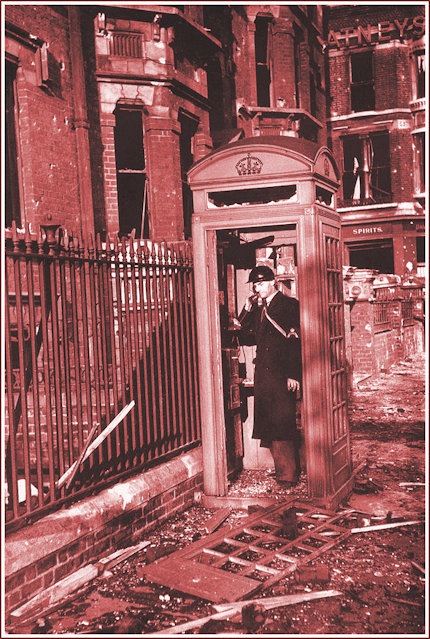
An Air Raid Warden is still able to use the Kiosk despite the bomb damage - still standing proud - Bombed Telephone Box - Source: Living in London during the Second World War in 1939-40. Photographer George Rodger as seen on Pininterest
WWII - Careless Talk
A nice piece of memorabilia from, I think, Bletchley Park (shhhhhh!) to keep you amused whilst this section is constructed. Accompanying the poster, a beautifully sandbagged kiosk (K2) during World War II.
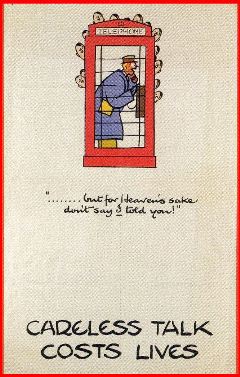
Let's not forget the legend of Superman
He used a telephone kiosk to transform from mortal to superhero ............. and it looks as if there was a demand for 'cookie' jars and money boxes in the form of the man emerging from the kiosk!
Two views of a money box probably from the first part of the 20th century.
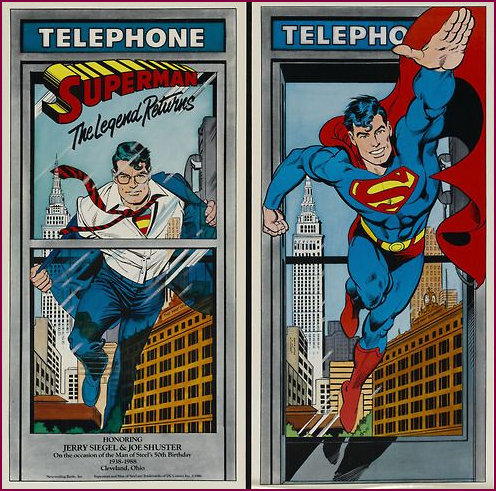
Still popular 50 years on - celebrating Superman's 50th anniversary
Marks and Spencer provide an updated and modern version of the 'Cookie' tin.
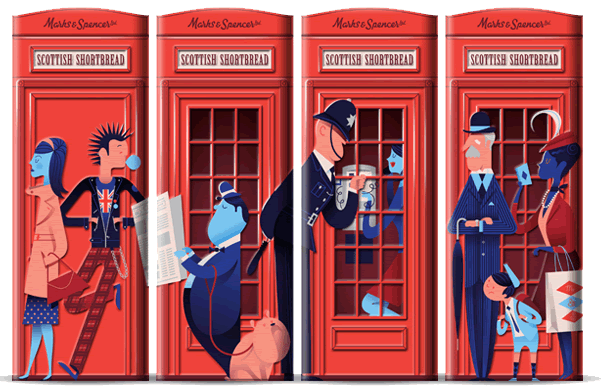
Page refreshed & updated : 16th November 2021 (G)
